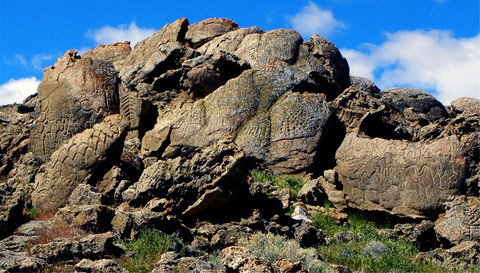Addendum: Bednarik, R.G. Pleistocene Palaeoart of the Americas. Arts, 2014, 3, 190-206.

Reference and Notes
- R.G. Bednarik. “Pleistocene Palaeoart of the Americas.” Arts 3 (2014): 190–206. [Google Scholar] [CrossRef]
- L.V. Benson, E.M. Hattori, J. Southon, and B. Aleck. “Dating North America’s oldest petroglyphs, Winnemucca Lake subbasin, Nevada.” J. Arch. Science 40 (2013): 4466–4476. [Google Scholar] [CrossRef]
© 2014 by the authors; licensee MDPI, Basel, Switzerland. This article is an open access article distributed under the terms and conditions of the Creative Commons Attribution license (http://creativecommons.org/licenses/by/3.0/).
Share and Cite
Bednarik, R.G. Addendum: Bednarik, R.G. Pleistocene Palaeoart of the Americas. Arts, 2014, 3, 190-206. Arts 2014, 3, 213-214. https://doi.org/10.3390/arts3020213
Bednarik RG. Addendum: Bednarik, R.G. Pleistocene Palaeoart of the Americas. Arts, 2014, 3, 190-206. Arts. 2014; 3(2):213-214. https://doi.org/10.3390/arts3020213
Chicago/Turabian StyleBednarik, Robert G. 2014. "Addendum: Bednarik, R.G. Pleistocene Palaeoart of the Americas. Arts, 2014, 3, 190-206." Arts 3, no. 2: 213-214. https://doi.org/10.3390/arts3020213
APA StyleBednarik, R. G. (2014). Addendum: Bednarik, R.G. Pleistocene Palaeoart of the Americas. Arts, 2014, 3, 190-206. Arts, 3(2), 213-214. https://doi.org/10.3390/arts3020213




